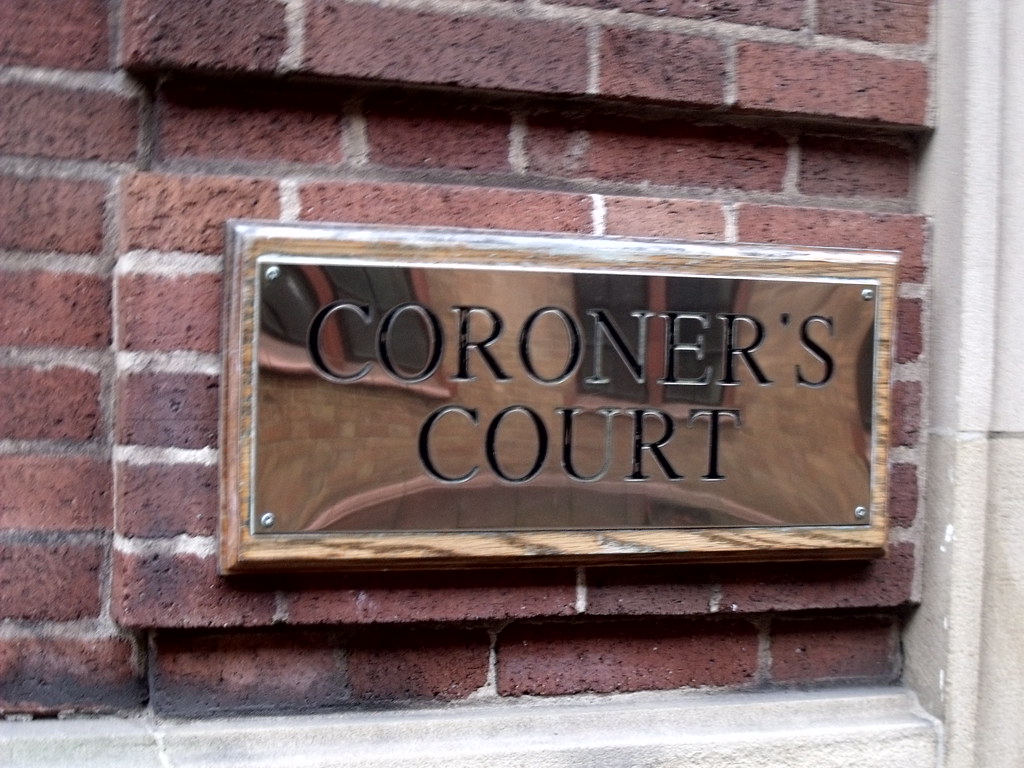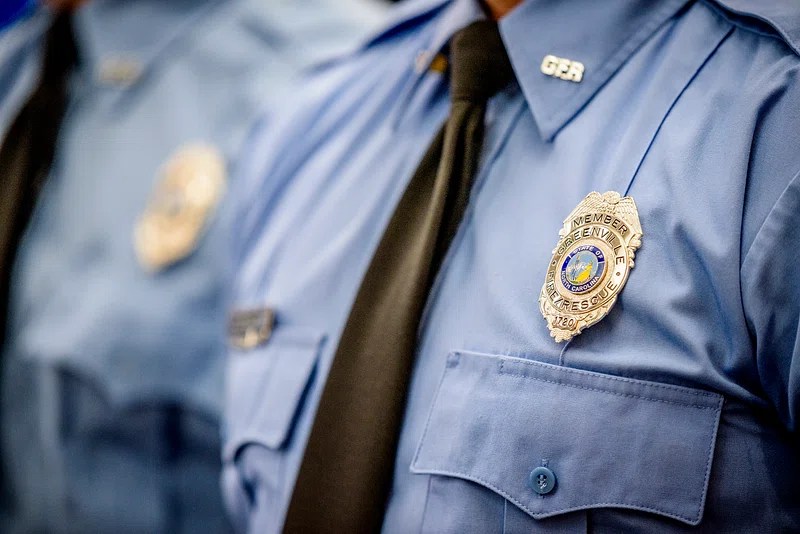R (Ferguson) v HM Assistant Coroner for Sefton, Knowlsey and St Helens [2025] EWHC 1901 (Admin) concerned a challenge by the next of kin of Joseph Farley, who died after jumping from the fourteenth floor of a carpark. The Coroner conducting mr Farley’s inquest has determined that Article 2, ECHR, did not apply and that the inquest could be heard without a jury. Mr Ferguson challenged both of these decisions by way of judicial review.
In a thorough and detailed judgment upholding Mr Ferguson’s challenge, Mrs Justice Hill gave a useful restatement of the law on Article 2, as well as a useful illustration of how it applies if difficult and complex fact patterns. The judgment also contains helpful clarification on the different sorts of causation tests that apply to parts of the Coronial process.
Facts
Mr Farley’s Death
At the time Mr Farley’s death, Merseyside Police operated a policy entitled Responding to People with Mental Ill-health or Learning Disability dated April 2019. The aim of the policy was to “improve the service provided to the people of Merseyside, who the police encounter and who may be experiencing difficulties with their mental health or learning disability“. It empowered and in come cases recommended the police to use the services of a mental health triage car, which could assist with people in mental health crisis. ([42])
Mr Farley had a history of self harm, psychosis, depression, and heavy drug and alcohol use and overdose in 2016 ([47]-[49]). He also had a history of poor compliance with medication ([50]). In February 2023, he was talked down from a car park roof by security staff, and was reporting suicidal ideation. He subsequently explained he had fleeting suicidal thoughts caused by derogatory voices in his head, but denied further thoughts, plans or intent, and was discharged back from the this emergency psychiatric care to regular community mental health care ([54]-[56]).
On 11 April 2023, just before 10am, a member of the public called 999 reporting a man, Mr Farley, sat on the top of a carpark roof, talking angrily and crying. About 20 minutes later, officers arrived on the scene ([59]-[61]). Over the next few minutes, several officers engaged with Mr Farley. The evidence of their exchanges, set out in detail at [62]-[72] paints a picture of a somewhat embarrassed and open Mr Farley, surprised at the level of worry he had caused. He assured the officers present that he wasn’t intending to “do anything stupid… or anything bad” or to hurt himself, but was just “getting things off [his] chest”, as a way of dealing with the voices he heard.
The police left, and Mr Farley was seen allowed to leave, and was seen heading away from the carpark ([72]). About 25 minutes later, he entered another carpark, ascended to the fourteenth floor, and jumped over the side. The fall caused his death ([74]). A subsequent search of his home found a note likely to be Mr Farley’s suicide note ([75]).
The investigation and inquest
An investigation by police was partially critical of the conduct of the officers of the scene, noting that they could have engaged the mental health triage car (which was available), made enquiries relating to Mr Farley’s mental health background, and stayed with Mr Farley until the car arrived ([79]).
The investigation concluded that the service provided by the police was “not acceptable”, having set out that ([81]-[82]):
“…the officer’s decision making was ultimately flawed, they made decisions based solely on their personal interpretation of how he presented to them rather than any fact based evidence…
…The officers were too easily swayed by James Farley[‘s] insistence he was not going to self-harm despite him being intoxicated with alcohol, the admission that he was hearing voices in his head and issues with his mental health. At no point did the officers question what the voices were telling him; if they had this may have triggered different considerations and options.
…
…there were several missed opportunities for the officers to ‘join the dots’ and a lack of operational policing experience contributed to their decision making. A Security Officer told the police that James Farley had been brought down from an adjacent car park. This information was not acted upon and was not conveyed to the radio room or officers dealing with James Farley. The police officers failed to conduct basic police checks, they failed to contact the MH triage car or contact a family member…
The pivotal failure was not to contact the Mental Health triage team, even without a MH nurse the officers would have contacted the NHS professionals through the 24/7 crisis phone number and advice could have been sought by them…”
An inquest was opened, and the Coroner indicated a view, upheld in response to submissions, that Article 2, ECHR, was not engaged ([91]; [94]). The basis was that Mr Farley had not been within the Stater’s responsibility, the State had no knowledge of the particular risk to Mr Farley, and the test for the application of the operational duty under art. 2 was not met ([95]). The Coroner also held that there was no “Coronial Causation” between any act or omission, which he interpreted as meaning an inappropraite act or omission, of a police officer and Mr Farley’s death, so there would be no jury.
Judgment
Mrs Justice Hill first dealt with delay and an argument raised by the Defendant that relief should be refused because, under ss 31(3D) and (2A), the outcome would have been substantially the same in any event. She held that was not delayed: it had been brought within the 3 month-time period, a pre-action letter had been sent quickly (and not responded to) and the delay within the period had been caused in part by the Defendant’s refusal to provide disclosure.
Perhaps more importantly, “neither the Coroner nor the Chief Constable advanced any submissions with regard to any hardship or prejudice they had suffered by any delay, let alone “substantial” hardship or prejudice” ([103]-[113]). Nor was there any merit in the argument that but for the error of law the outcome would not have been different – this was only maintained in the end in respect of the decision to summon a jury, but had there been an error of law, a jury would have had to be summoned had the error not been made – the outcome would have been “entirely different” ([115]-[120]).
Article 2
Mrs Justice Hill started by clarifying that the threshold of arguably applies to both aspects of the article 2 enquiry (duty and breach) when the challenge is conducted before evidence is heard; while there is a high threshold for the existence of a duty under article 2 once all the evidence has been heard, there is – as was held in Morahan – a relatively low threshold, namely arguability, when making “a decision as to whether Article 2 is engaged before the evidence commences” ([126]-[128]). As Mrs Justice Hill put it:
“I observe that the rationale for the low arguability threshold described in Morahan at [75] and [102], namely the concern to avoid the risk of a Coroner determining what the outcome of any inquest might be without the full evidential picture, applies with equal force to the duty issue and the breach issue, when either is considered before the evidence has been heard. This explains why the threshold is the same for both the duty issue and the breach issue.”
Mrs Justice Hill then examined whether there was a real and immediate risk.
The Coroner’s decision gave the reasons in support of which elided the questions of duty and breach ([139]) as:
“the short time period between the 2 events“
“the Police involvement at the Car Park on Delamere Road Bootle”; and
“the demeanour of Mr Farley and explanations which he gave to the Police“
In relation to the first reason, Mrs Justice Hill said, unsurprisingly, that she “struggle[d] to follow how a short timescale of this kind could properly be used to support a finding that there was no arguable real and immediate risk to Mr Farley’s life of which the officers did or should have had knowledge. If anything, a short timescale of this kind militates in favour of there being such a real and immediate risk, and of the officers having actual or constructive knowledge of it.” ([142]). She was equally unimpressed by the cogency of the second reason ([143]).
The Defendant relied heavily on the third reason, essentially arguing that the officers were reasonably reassured by Mr Farley’s demeanour ([146]). Mrs Justice Hill was not satisfied that the Coroner’s decision was sound. Noting the there were legitimate arguments to be made about Mr Farley’s presentation, that the officers had been criticised in the police’s own investigation for failing to engage mental health professionals, and that the Osman duty depends not just on what the state in fact knew but also on what they ought to know, she held that “the reasons given by the Coroner do not provide a sound basis for the conclusion that there was no arguable real and immediate risk to Mr Farley’s life of which the officers did or should have had knowledge.” ([153]).
On the contrary, applying the Morahan factors, the risk of suicide was “at least 5% such that it was not remote or fanciful but was significant or substantial”. It was immediate. It was a risk of death. And it was, on the basis of what the police knew or ought to have know, objective and well-founded ([173]).
Turning from whether there was a real and immediate risk to whether Mr Farley was within the State’s responsibility, which Mrs Justice Hill referred to as “The Rabone indicia”, Mrs Justice Hill held that it was arguable that the police had assumed responsibility for Mr Farley, noting that they attended for the specific purpose of protecting him from the risk of suicide, took away his alcohol, expressly told Mr Farley they were there because they were “worried’ about him, and even made a VPRF/1 referral. She held that ([179]):
“It is at least arguable that these words and actions by the officers amounted to express or implied assurances that they would take care to protect Mr Farley from the specific risk of self-harm or suicide. It is also at least arguable that he acted on those assurances by coming down from the roof with the officers.”
She then observed that while Mr Farley was not in the “paradigm situation” of control (arrest or detention), there were a number of factors tending to suggest control:
The police could have imposed control on Mr Farley (using their s. 136 powers), if for example he had moved towards the edge of the roof apparently intending to jump. This in fact afforded the officers a level of control ([183]).
Noting that “regard must be had to what the officers should have done as well as what they did do”, the investigation’s conclusions that officers should have sought the assistance of a mental health professional were relevant, because if they had done it was possible that Mr Farley would have become a mental health patient ([182]).
Mr Farley as, by reason of his psychosis, vulnerable, which was recognised in Rabone as relevant. It was relevant that the risk faced, of suicide, was considered an exceptional, not an ordinary, risk in respect to a person with psychosis ([187]).
Regarding the nature of the risk, the harm which eventuated was exactly the kind the officers had attended to deal with ([188]).
Mrs Justice hill concluded that the Coroner had erred in finding that it was not arguable that the officers owed the positive operations duty to Mr Farley ([190]).
She then turned to the question of breach of that duty. She noted that the reasons given by the Coroner were, as set out above, not differentiated. She held that the Coroner had relied on the need to avoid a disproportionate burden on the state without regard to the evidence of what steps should in fact have been taken. Noting that there was no suggestion the police had considered and rejected any steps as involving an impossible or disproportionate burden, she held that ([194]):
“it was inappropriate to try and conduct this balancing exercise retrospectively, certainly for the purposes of the low arguability threshold relevant to the duty and breach issues.”
Considering the steps taken, and parties’ arguments about the steps that could have been taken, Mrs Justice Hill concluded that there was “a credible, arguable case that the positive operational duty was breached by the officers.” and the Coroner had erred in law in failing to so find ([204; [215]]).
Finally in relation to Article 2, Mrs Justice Hill pointed out that in applying what he called the test of Coronial Causation, the Coroner had erred in law: the test of causation for breach of article 2, is a different, less demeaning test (omitted here for reasons of length but helpfully set out at [211].
The Claimant also argued that the article 2 systems duty had been arguably breached, but Mrs Justice Hill did not uphold this part of the challenge, which was dealt with rather briefly ([217]-[224]).
Jury
The judgment explains that “under section 7(2)(b) of the CJA, an inquest must be held with a jury where the coroner has “reason to suspect…that the death resulted from an act or omission of…a police officer…in the purported execution of the officer’s…duty as such”“.
Mrs Justice Hill noted that although it was not necessarily inconsistent with the statute, requiring an act or omission to be “inappropriate” was a gloss on the statute not supported by authority ([230]). The Coroner had also, incorrectly, applied the wrong test of causation, relying against on Coronial Causation (rather than the statutory test of reason to suspect, which is a lower hurdle)([231]). In light of the evidence and the low hurdle, she held that the Coroner had erred in failing to conclude that a jury was required ([240]).
Mrs Justice Hill went on to comment, obiter, that the way the Coroner had applied the test was so narrow as to mean that on his approach the fact Mr Farley jumped of his own volition would have broken the chain of causation with any prior act or omission, limiting juries far more narrowly than is commonly understood. She observed that “Such an interpretation would fail to acknowledge that self-inflicted deaths can, and often do, “result from” both the actions of the deceased and the acts or omissions of the state” ([232]-[236]).
Comment
Mrs Justice Hill’s judgment in Ferguson is a careful and richly detailed decision with much of interest to those seeking to apply article 2 in the context of an inquest, whether in an inquest hearing itself or in a challenge by way of judicial review. Though the judgment as a whole bears close reading, a few points jump out for comment.
First, the argument over the threshold issue for the application of article 2 is illustrative of the pervasive confusion over the difference between procedural and substantive obligations that together comprise article 2. The former concerns the state’s investigative responsibility, as amply covered in Morahan. Arguability is the relevant standard because this is what is triggers a duty on the state to investigate a potential breach of a substantive duty. There is, necessarily, usually insufficient evidence at the point of deciding whether to investigate to determine finally whether there has been a breach.
So even though, as Mrs Justice Hill acknowledged, there there is a relatively high threshold for the substantive operational duty to be engaged (i.e. the real and immediate risk to life test), what a Coroner must ask themselves at the start of an inquest is whether the relatively low threshold of arguability is satisfied in relation to the possibility that, at the conclusion of inquiries, that higher threshold will be satisfied.
The presence of different thresholds expressed as being higher and lower at different stages of the process can make the test confusing to apply, but it is vital to keep in mind the difference between the threshold for investigating something, and the threshold for reaching a conclusion to that investigation with all the evidence – this ought to be a simple distinction.
Secondly, Mrs Justice Hill, formerly an experienced inquest lawyer herself, said that she would “respectfully question the wisdom” of the Coroner’s decision to deal with the applicability of Article 2 on the papers, without an oral hearing, despite the Chief Coroner’s Guidance making clear that arguments about Article two are among “precisely the sort of topics that will “often” be included in the agenda” of a Pre-Inquest Review Hearing ([101]).
The legal (and, though not detailed above, factual) mistakes which vitiated the Coroner’s decision-making might well have been avoided had more time been taken to consider oral submissions from the parties. Though coroners are often pressed for time, both time and cost can be saved by getting things right the first time and avoiding judicial review.
Thirdly, the judgment contained two observations that will be of interest to those making article 2 arguments in a range of contexts, including when applying Rabone and Morahan to edge cases:
at [177], Mrs Justice Hill noted that it is proper to have regard to authorities in tort law on the meaning of an assumption of responsibility when considering whether the State has made such an assumption for the purpose of the test in Rabone; and
at [182], she confirmed that consideration of what the State (or its agents) has done for the purpose of compliance with the operational duty requires taking into account what they should (or perhaps could) have done but did not.
Jasper Gold is a barrister at 1 Crown Office Row and the Commissioning Editor of the UK Human Rights Blog.
The post Coronial investigation of the Police after suicide – Coroner’s decisions on Article 2 and jury overturned appeared first on UK Human Rights Blog.




